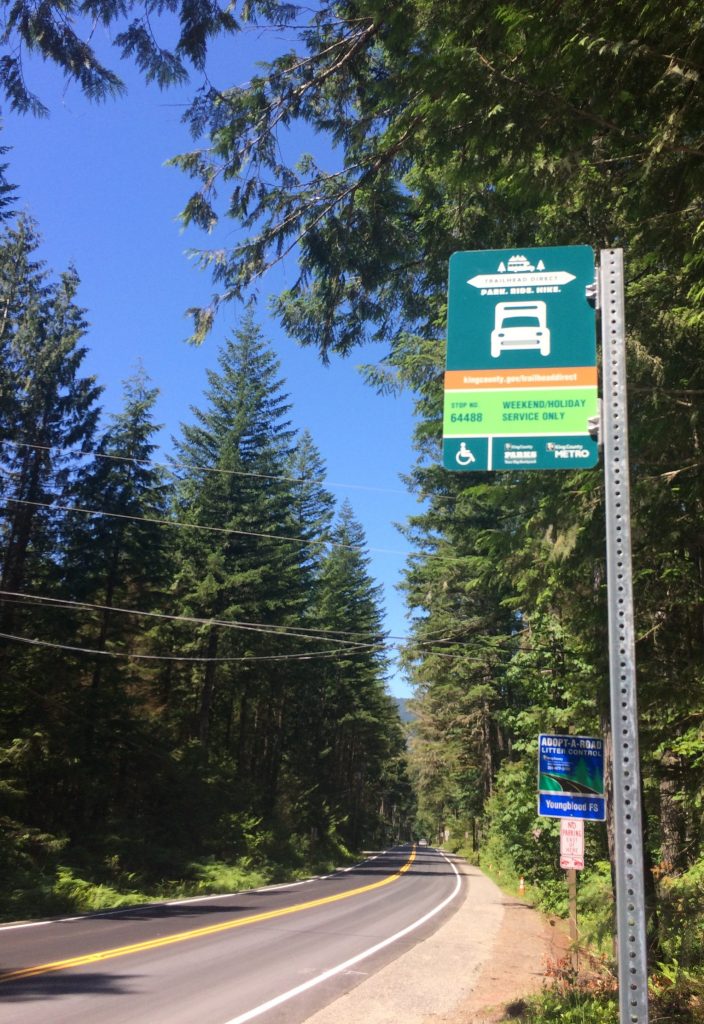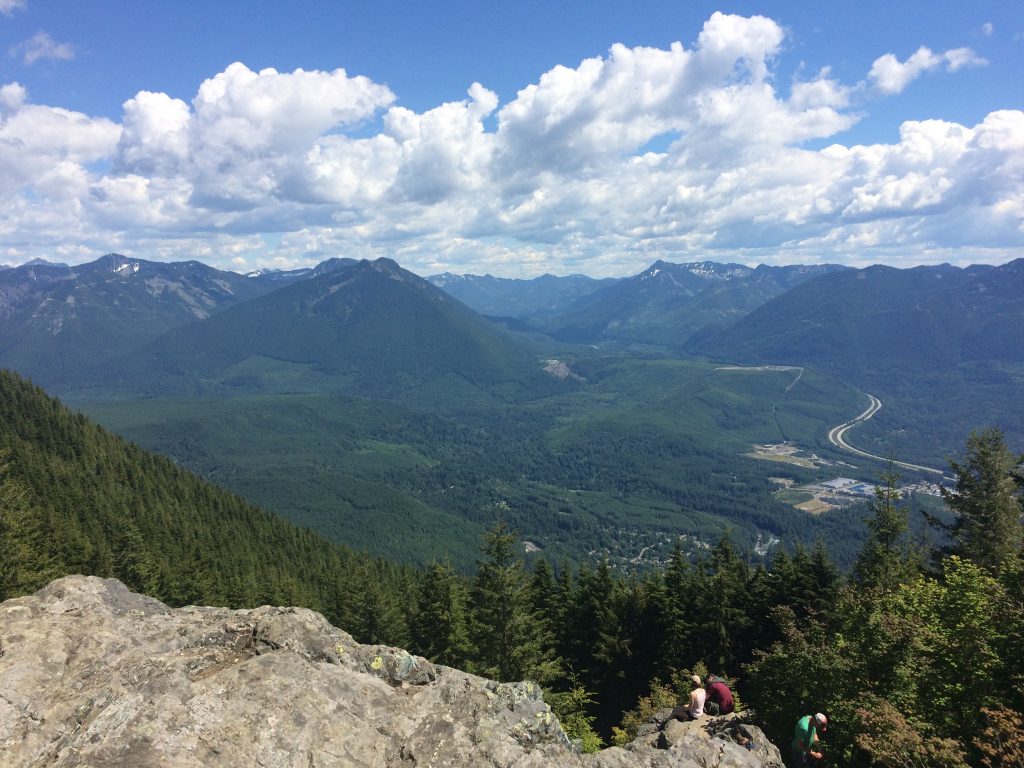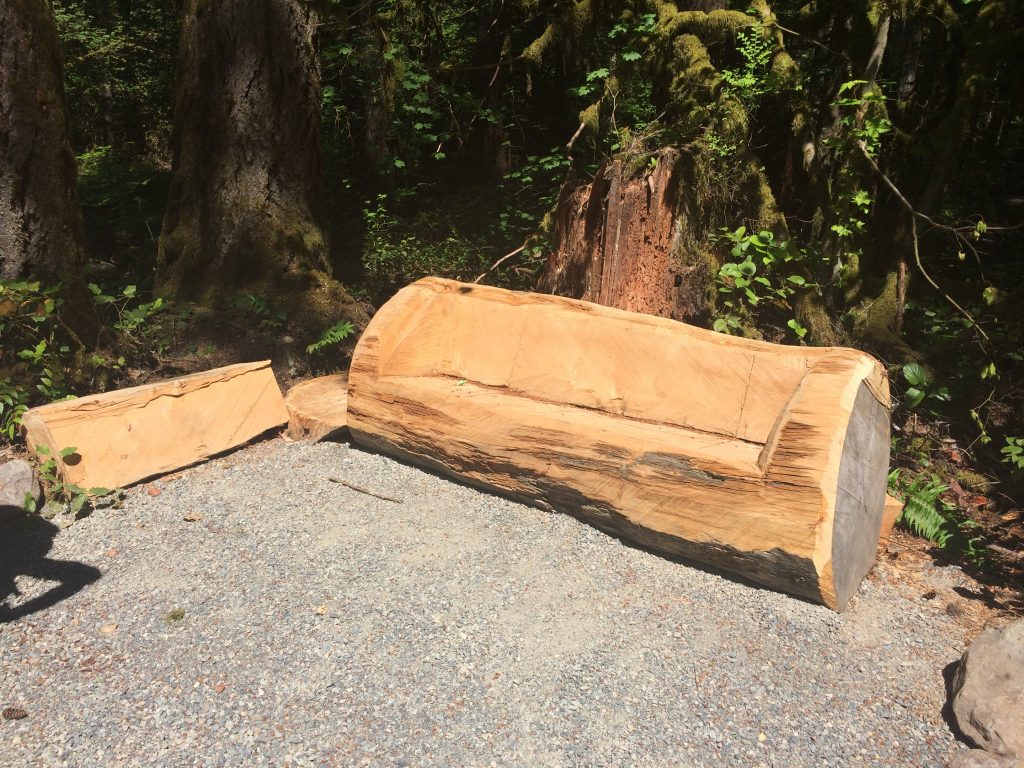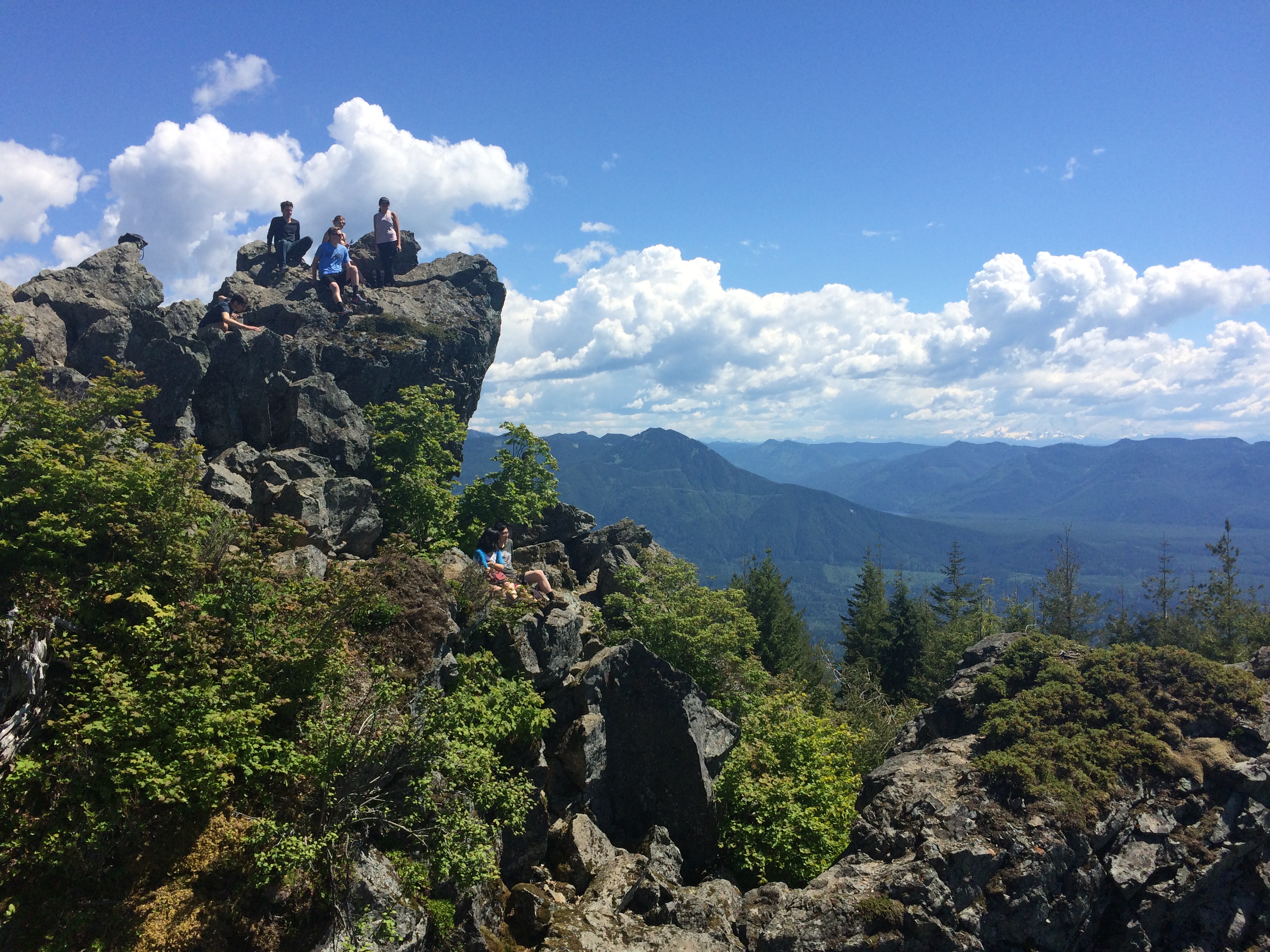Not too long ago, I was taking the bus to my job when I noticed an ad behind the bus driver. I don’t remember the exact wording, but the message was clear: Seattle was now providing public transportation from the city to hiking trails around Washington starting this summer. A rush of adrenaline coursed through me. Because that’s the joke, isn’t it? In order to enjoy nature you have to drive two hours in the car to get there.
I took a picture of the ad and looked it up on my computer when I got home. Sure enough, Seattle had started a service called Trailhead Direct that transports people from major areas of the city to Mount Si, The Issaquah Alps, and Mailbox Peak. I immediately shared the news on social media and made it my mission to try it out…only to find that the service ran on weekends alone. At the time I was working retail and I never got a Saturday or Sunday off.
Even so, I understood the decision on the company’s part to keep the bus service to weekends only. One of their main goals was to reduce weekend traffic, which is insane in the summers here. It just so happened that this goal lined up with a few of my own: reducing my carbon footprint and making nature more accessible to people who don’t have cars (or the expensive pass to park near trailheads).
Luckily, I got a new job that gives me Sundays off right at the beginning of the summer. My mission was once again a possibility.
The first sunny Sunday I had free, my partner and I ventured to Mount Si. That Trailhead Direct left near Capitol Hill Station, which is accessible to us via a bus and a short ride on “The Link,” Seattle’s subway/metro. Two out of three of Trailhead Directs leave near a Link station, increasing its accessibility tenfold because there are so many buses that go by the Link.
Nathan and I weren’t in any rush, so we didn’t bother making a timetable that would minimize our commute time. We caught the bus, filled up our Orca cards at the Link station, got to Capitol Hill, wandered around to find some coffee, and arrived at the Trailhead Direct bus stop about half an hour before the next bus.
(Side note: it was a scavenger hunt finding the bus stop. The website said “E Olive Way and Broadway E” on its blurry map, so if you’re looking for the bus to Mount Si, go to where E Olive Way turns into John Street and find the bus stop next to the Rite Aid with the movie theater storefront. There will be a tiny sign next to the list of city buses that says “Trailhead Direct”).
The bus only comes by once an hour, but I imagine as it becomes more popular this schedule will change. Demand and supply, after all.
We knew we were in the right place when people started arriving with hiking boots and backpacks . We had fun guessing what kind of trip they were taking: a new couple, old hiking buddies, even what was clearly a Tinder date. Regardless, like Noah’s ark we came in twos. That’s why unlike the normally graveyard-silent ride you get on Seattle city buses, everyone was chatting and laughing for the entire trip.

Later, I would realize how lucky we were to get Seena as our bus driver. I don’t believe they are all as informative and passionate about Trailhead Direct’s mission as she. She gave us the lowdown on why Trailhead Direct exists beyond “a convenient service for Seattle.” Surprisingly, Trailhead Direct is not a King County thing. Rather, King County has contracted out the service to the non-profit organization, Hopelink. A little Google research revealed that Hopelink “helps more than 64,000 people through programs that provide stability and the skills and knowledge needed to exit poverty.” This effort includes:
- Food assistance
- Employment services
- Emergency financial help
- Financial capabilities
- Housing
- Transportation
- Adult education
- Energy assistance
- Family development
Who knew?! It’s not every day that zero waste choices kill so many metaphorical birds with one Trailhead Direct stone.
Seena also explained that King County bus drivers’ workloads were too heavy to slap on non-profit busing responsibilities to trailheads on weekends (Seena is a retired King County bus driver of 20 years, so she would know). Outsourcing to Hopelink made sense for both parties.
Once Seena was done explaining, I took notes and Nathan took a nap (another perk of taking public transportation to the last stop).
We made brief stops in Bellevue, North Bend, and Mount Teneriffe before arriving at our final destination. The Trailhead Direct dropped us off just outside the parking lot for Mount Si’s old hiking trail.

As I alluded to a moment ago, I’m not what you would call an experienced hiker. I love walking in the woods, but for the last year I had had trouble finding hiking buddies with my irregular work schedule. So believe me when I say Mount Si was a struggle. (Coming soon: Helen’s Hiking Diaries, where you’ll get all the juicy details of the hike itself). I reached the top by sheer determination and my hiking partner’s undying support rather than any physical ability. Luckily, the view at the top was too stunning to worry about the fact that I would eventually have to hike all the way back.

After taking in the scene, Nathan and I found an unoccupied flat surface to picnic on. In addition to carrying three water bottles and a full canteen, he’d also packed two vegan sub sandwiches (homemade) that I’d wrapped in kitchen towels. Another hiker watched us unwrap these diaper-looking packages with interest.
“I never would have thought of that!” he said. I looked down at our sandwiches.
“Oh, yeah. Towels are way lighter than tupperware. I didn’t want to be that mean to this pack-man,” I replied, nudging Nathan.
“Most people just use plastic bags,” the hiker said, gesturing to his own baggie of chopped veggies. “You got any more pearls of wisdom for me?”
“I got a whole blog of them,” I laughed with a mouth full of sandwich. I could see him losing interest at that comment, so I switched gears quickly to run through my usual list of quick zero waste changes: buying in bulk to avoid food packaging, using bar soap, not driving your car whenever possible…
“But you drove a car to get here,” he pointed out, and then, as if remembering this was an option, “unless you took the bus?”
“We did, actually,” Nathan said. And then we discussed the Trailhead Direct.
“Well I’ll have to try that sometime!” the hiker said with a smile. “It’s encouraging to see young people setting an example. Really makes you think. You’ve inspired me to try harder next time.”
I blushed. “Thank you,” I said. “That’s one of the reasons I do what I do.” And it really is. Looking like the weirdo with a hankie or feeling ashamed for asking a server to leave out the straw is all worth it for these little moments when someone says your example made them change for the better.
We explored the summit a while more until Nathan looked at his watch.
“Do we need to get going?” I asked.
“We got plenty of time,” he smiled. “But I’m ready if you are.”
Here’s what some would argue is a downside to taking the bus hiking: you have to make it back to the trailhead before the last bus takes off. Otherwise you’re gonna be hitchhiking to a seedy North Bend motel for the night.
By the time we reached the bottom, my knees were in more pain than I could remember. We collapsed onto the Trailhead Direct bench, which I must say is far more comfortable than your average city bus stop.

Ten minutes into our wait, a car pulled up beside the five (Count them: 5) No Parking signs and dropped off another couple. Instead of hiking boots, the man wore loafers. Instead of pants that zip at the knee, the woman wore an ankle-length skirt. This duo was not the last of Trailhead Direct riders who were not hikers. Turns out the weekend-only bus line also offers city-goers an express alternative to the city if they happen to live near Bellevue, North Bend, or one of the trailheads.
The seats felt even more comfortable back on the bus. “You know, this may be my biggest reason for taking this thing,” Nathan said. “You don’t have to drive home after a hike. Driving is a weird experience when you can barely move your arms and legs.” Noted. I’ve always been spoiled by choosing hiking buddies with cars.
It took longer to get back to Seattle than it had to get to Mount Si due to traffic, but this was only to be expected. Once again, when you’re not the one driving, traffic isn’t as stressful.
When we got off the bus outside Capitol Hill Station, we passed two men leaning against the Link Station building.
“Excuse me,” one of them said. My first instinct as a city dweller was to ignore him completely. Paying attention could elicit a lewd comment or a petition shoved under your nose. But something in the way he spoke made me look back. “Was that the bus that goes to the hiking trails?”
I smiled. “Yeah, it is. We just got back from Mount Si.”
The man nodded slowly. “Very cool. Have to try that sometime.”
Little moments.
We arrived home about an hour later. It wouldn’t have taken so long if I’d had the strength to move faster and not miss our connections. All in all, the whole trip cost us each $7.50, but if you only take the bus it’s just $5 (or $2.50 if you manage to make the round trip in under 2 hours).
If it isn’t clear, I can’t recommend Trailhead Direct enough. If you’re in the Seattle area and want to explore outside the city, I hope my story has convinced you to give it a shot. Let’s do our part to make hiking an eco-friendly endeavor.

Oh, man, I wish this existed when we were living there! That would have been awesome!